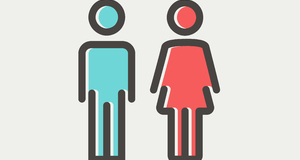How Do I Look? The Impact of Compliments on Self-Perceived AttractivenessMethodologyParticipants The participants of the study consisted of 48 college students, consisting of 24 females and 24 males with a mean age of 20.25 (SD = 1.26), predominantly juniors (12.5% freshmen, 22.9% sophomores, 41.7% juniors, and 22.9% seniors). Ethnically, 52.1% of participants were White, 18.8% Asian and Hispanic each, 4.2% Black, and 6.2% either other or preferring not to disclose. Participants were recruited by researchers on a volunteer basis and consisted mainly of classmates and random people within the researchers’ surroundings. MaterialsParticipants in the study were provided with single-page questionnaires. On the top of the page was a short survey about demographics, the purpose of which was to collect important information about the participants such as gender, ethnicity, academic year, and age. Only gender was actually relevant to the study, but the rest of the information was requested purely out of interest. Just below the demographic survey were the instructions for the rest of the questionnaire, which explained the 7-point scale used for the participants to rank themselves. The questionnaire itself consisted of six questions, designed to measure self-perceived attractiveness (See Appendix A). A participant’s score consisted of mean score of the two values reported for questions 4 and 5, asking if the participant considered themselves attractive to potential mates and if they believe themselves to be more attractive than the average members of their gender. These were the only two questions for evaluation of the participant’s own attractiveness, whereas the others discussed beauty in some form (such as asking about the media’s portrayal of beauty). The compliment provided for the participants in the experimental category -- "that color looks nice on you!" -- was designed to be general and, thus, applicable to the widest array of participants possible. Procedures Participants were chosen at random from the surroundings of the researcher, but not yet assigned to the experimental or control categories. It was explained to them that they would be answering a short questionnaire. Informed consent was immediately obtained. As the consent form was being completed, the researcher randomly decided if the participant would be a part of the experimental group and receive the compliment, or part of the control group and proceed without interruption. If the participant was chosen to be in the experimental group, the experimenter orally delivered the compliment, trying to make it not seem too obvious that it was a part of the study. If not, the questionnaire was silently handed to the participant. The participant first completed the demographic survey, and then was asked if they understood the instructions. Once understanding had been reached, the participant answered the questionnaire. Upon the completion of this task, the page was collected from the participant and then the participant was debriefed as to the nature of the experiment and then given the opportunity to ask further questions. The results to this survey were scored based on the arithmetic mean of the participant’s answers to questions 4 and 5. ResultsThis purpose of the study was to examine the effects of compliments on self-perceived attractiveness in males versus females. To analyze the results of this study, a 2x2 Analysis of Variance with an alpha level of .05 was used. As predicted, it was shown in Figure 1 that a main effect of the presence of a compliment had been found, as evident in that participants who had been complimented reported a higher self-perceived attractiveness, with a mean of 5.42 (SD = .87), than those who had not (mean of 4.35 [SD = 1.26]), F(1,44) = 11.79, p = .001). Figure 1: Self-perceived attractiveness as a function of compliments in males versus females.
However, no significant main effect of gender was revealed, thus eliminating the subject variable; males scored themselves at an average of 5.06 (SD = 1.07) and females only slightly below at an average of 4.71 (SD = 1.31). Furthermore, the no significant interaction between gender of the participant and presence of a compliment was revealed, F(1,44) = 1.310, p < .259, indicating that, despite scores being higher for participants in the groups that had received compliments, there was no significant difference between the effect of the compliment depending solely on the gender of the participant. Figure 2: Self-perceived attractiveness as a function of compliments. Suggested Reading from Inquiries Journal
Inquiries Journal provides undergraduate and graduate students around the world a platform for the wide dissemination of academic work over a range of core disciplines. Representing the work of students from hundreds of institutions around the globe, Inquiries Journal's large database of academic articles is completely free. Learn more | Blog | Submit Latest in Psychology |




















